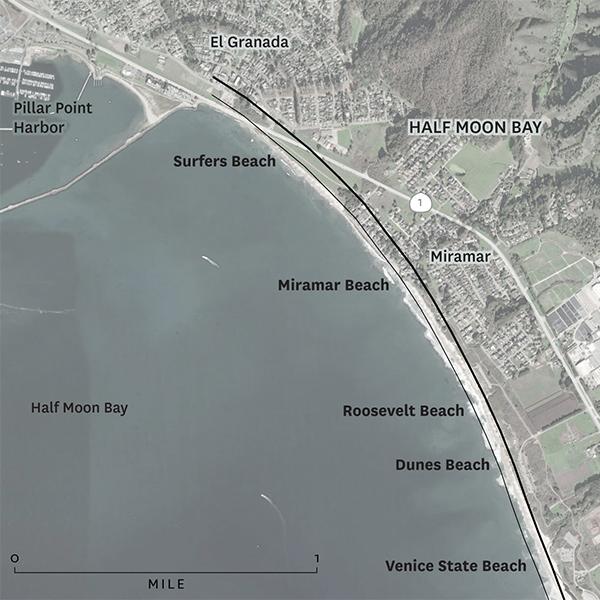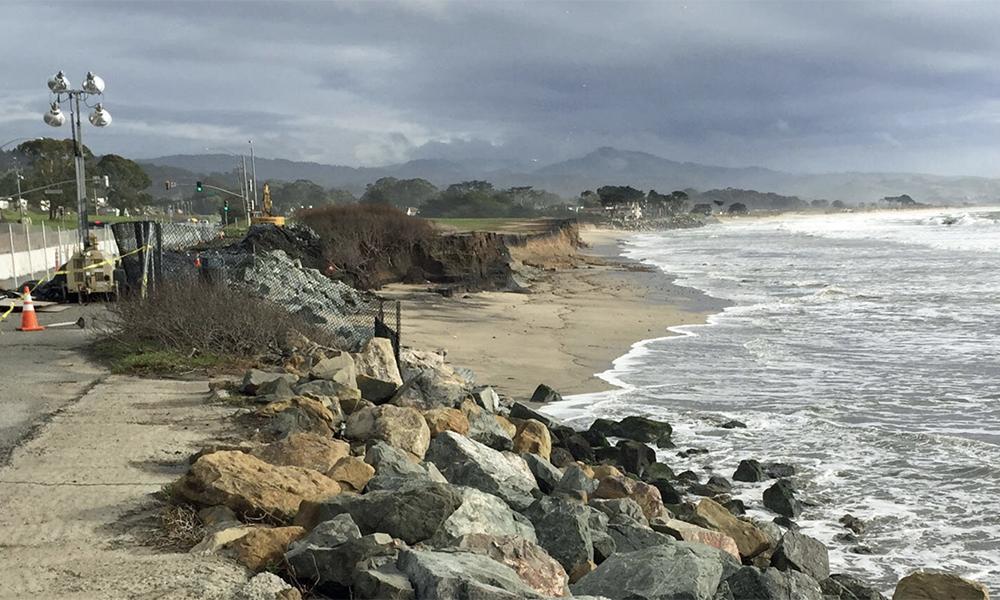Compare historic photos of northern Half Moon Bay State Beach to current ones and the change is very dramatic. New visitors might be surprised to know that at one point, you could turn westbound on Coronado Street and drive to the Miramar Beach restaurant along the blufftop. Attempting to do that today would result in a very short trip — straight into the ocean.
A bit further south down Half Moon Bay Beach, a visitor in 2018 would have seen a small ranger residence perched along the Coastal Trail. After a series of pounding winters, this home was abandoned and removed as retreating bluff crept under the foundation.
Also nearby, eroding bluffs have now compromised the very popular Coastal Trail and forced authorities to install barricades and reroute the trail. It is not a question of if the trail will someday fall into the sea, just when.
There are numerous examples of coastal erosion up and down the Coastside as Mother Nature does what she has always done. In fact, according to a recent study near Cowell Ranch State beach, nearby cliffs are retreating on average of up to 6 inches per year. Multiply this by 10, 20 or even 50 years, and it is clear that many areas of Coastside development and it’s beaches will be at risk.
Erosion of our beaches is a natural process, but the question is whether this erosion is speeding up and has human activity had an effect? In certain cases it is clear. Adding the Half Moon Bay jetty to create Pillar Point Harbor in 1961 has prevented sand replenishment to the south, removing the natural defense against winter storms. Now waves consistently break over the rip rap throwing debris on to Highway One. Eventually, the roadway will need to be realigned further inland.
But what about climate change? Unfortunately, a recent USGS yet-to-be-published report projects that by the year 2100, and incredible 25-70% of the state’s beaches could erode completely and that climate change, with the subsequent sea level rise and increased wave heights, is a big contributing factor. The report uses models that are based on sea level rise projections of 1.6 to 10 feet, a range that varies depending on how we are able to limit greenhouse gas emissions. Using the most dire of those predictions, Half Moon Bay State Beach would completely disappear, dozens of structures would be destroyed and much of Highway 1 would disappear. Think about your favorite Coastside beach and try to imagine what kind of impact such a significant rise in sea would have.
Some in the scientific community caution against relying too much on specific models and predictions as there are simply too many variables to take into account, but all agree that monitoring the trends is key to understanding what’s happening now and what could be done to prevent our beaches from disappearing in the future.
For now, while we appreciate the beauty of our Coastside beaches, we can keep an eye on areas of concern and be as environmentally conscious as possible to ensure that our children and grandchildren are able to experience the magnificent beaches just as we have.
Click Here to read the Half Moon Bay study.
Article written by Bill Murray, CSPA Board President


